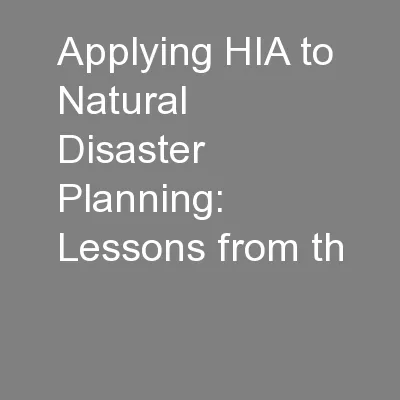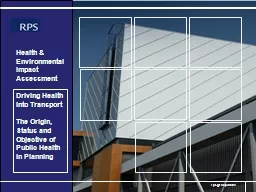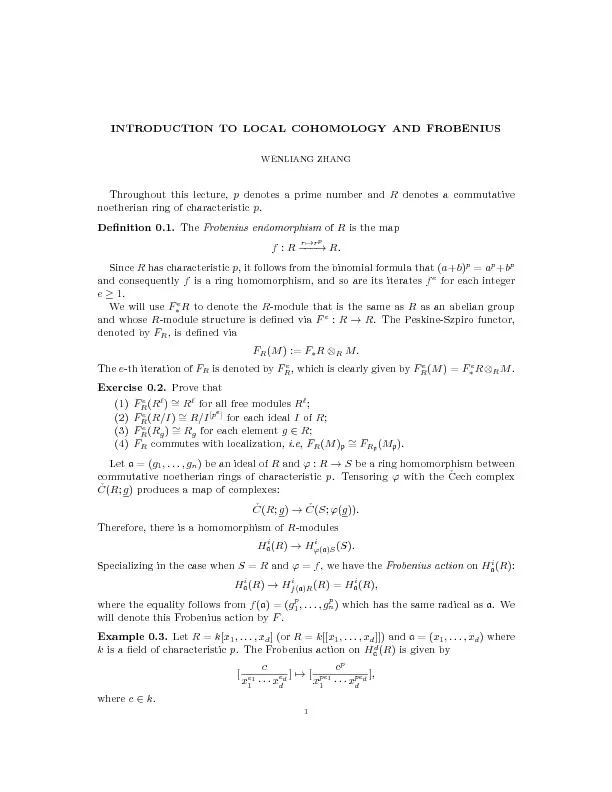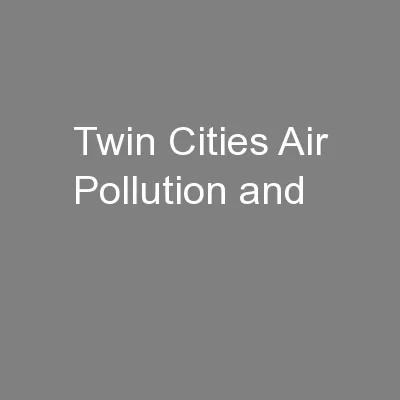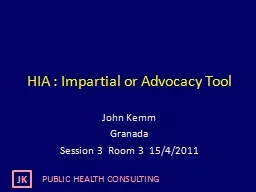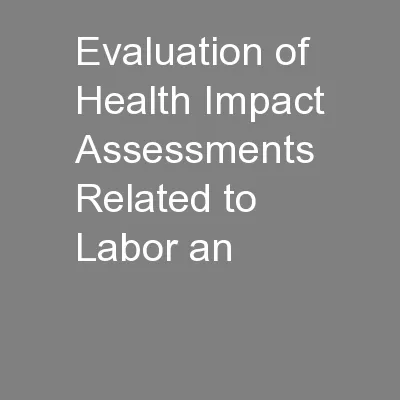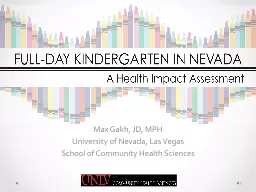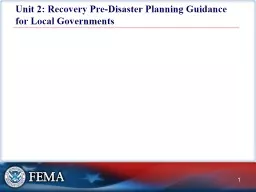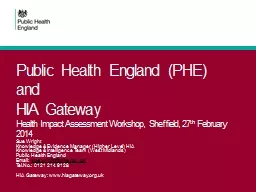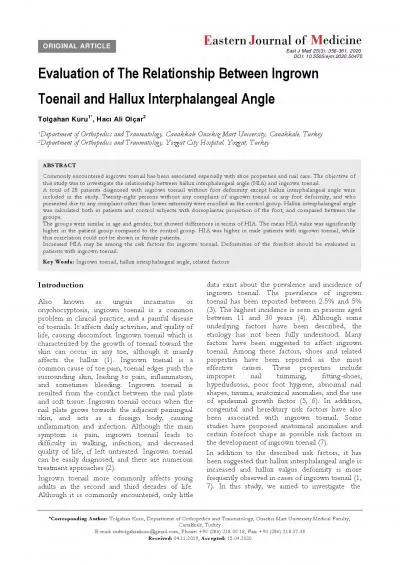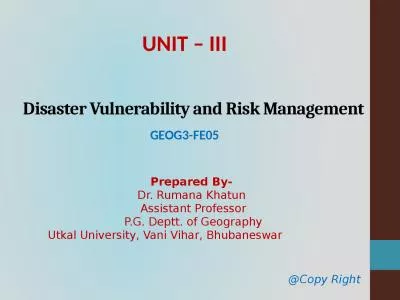PPT-Applying HIA to Natural Disaster Planning: Lessons from th
Author : olivia-moreira | Published Date : 2016-11-23
2015 National Health Impact Assessment Meeting Washington DC June 1617 2015 Presented by Jon Carnegie AICPPP Karen Lowrie PhD This project is supported
Presentation Embed Code
Download Presentation
Download Presentation The PPT/PDF document "Applying HIA to Natural Disaster Plannin..." is the property of its rightful owner. Permission is granted to download and print the materials on this website for personal, non-commercial use only, and to display it on your personal computer provided you do not modify the materials and that you retain all copyright notices contained in the materials. By downloading content from our website, you accept the terms of this agreement.
Applying HIA to Natural Disaster Planning: Lessons from th: Transcript
Download Rules Of Document
"Applying HIA to Natural Disaster Planning: Lessons from th"The content belongs to its owner. You may download and print it for personal use, without modification, and keep all copyright notices. By downloading, you agree to these terms.
Related Documents

